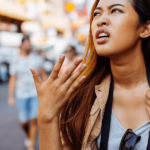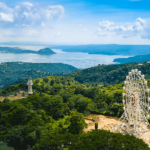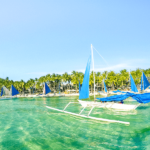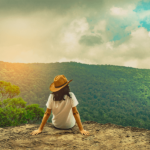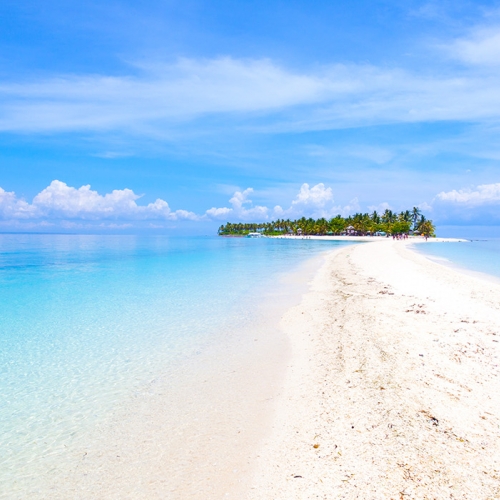Travel Without Hassle: A Tourist Guide for Philippines Travel during the Pandemic
Since international flights are still risky, you’ve probably thought of exploring the Pearl of the Orient during the pandemic. Getting away from the hustle and bustle of everyday life is definitely a big mood! It could also help the tourism of our country. To travel without hassle, you must know the do’s and don’ts of Philippine travel.
 It would also be helpful for you to know which are Philippines destinations open for tourist sightings now. Who doesn’t love a well-planned itinerary, right? To get the most out of your adventure, you must follow safety regulations. This also ensures that you can fully enjoy the experience.
It would also be helpful for you to know which are Philippines destinations open for tourist sightings now. Who doesn’t love a well-planned itinerary, right? To get the most out of your adventure, you must follow safety regulations. This also ensures that you can fully enjoy the experience.
Without further ado, mabuhay! Here is the tourist guide for Philippines travel during the pandemic. We hope you enjoy your trip despite the challenges of COVID-19.
Are Tourists Welcome in the Philippines?
Currently, international flights or inbound travel to the country is banned, except if you are a returning Filipino (OFW), seafarer, stranded Filipino tourist, and foreigner.
On the other hand, outbound flights have been allowed since October 21, 2020.
Since the Philippines is starting to rebuild its economy, COVID19 pandemic Philippines travel is starting to open. Domestic travels are slowly welcoming leisure tourists, provided they follow the health regulations required.
Requirements for COVID19 Pandemic Philippines Travel
Some Philippines destinations open for tourist travel during COVID-19 require the following to allow entry in their areas:
 | 1. RT-PCR testThe Real-Time Reverse Transcription Polymerase Chain Reaction test is a way to determine if an individual has COVID-19. It takes only 24 hours up to 5 days to process the results. Most areas require this to ensure that the tourist is COVID-19 free. |
 | 2. Health certificateAs a supporting document to the RT-PCR test, a health certificate from the city or municipal health office is required to ensure that the tourist is free from communicable diseases. |
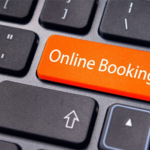 | 3. Booking/ReservationTo avoid unexpected cases of COVID-19, tourists must be responsible enough to book or reserve a place for them to stay in during their visit. This is also to reduce contact with the locals upon their arrival. |
  | 4. Travel passA travel pass or travel authority from the Philippine National Police is required in order to ensure that your visit is legal. This is also to avoid risks and further contact with locals. |
  | 5. Authority to EnterThe authority to enter is also authorized by the Philippine National Police. This is issued after getting a medical clearance certificate from the city or municipal health office. |
  | 6. Valid IDOf course, a valid ID is required wherever you go in order to be able to verify your identity. |
  | 7. Certificate of QuarantineThis is a requirement for returning OFWs who wish to return and travel in the Philippines. This is issued by the Department of Health-Bureau of Quarantine. |
Philippines Destinations Open for Tourist During COVID-19
Several tourist destinations in the Philippines have already opened for tourists, while others remain restricted to residents’ entry alone. Find out where you can plan your staycation or road trip through this guide!
Open for Domestic Tourists
- Batangas
- Cavite
- Clark Freeport Zone
- Cotabato City
- Davao Oriental
- Laguna
- Coron
- Rizal
- Surigao del Norte
- Siargao
- South Cotabato
- Sultan Kudarat
- Tagaytay
Philippines Destinations Open for Domestic Tourists with Additional Requirements
- Baguio: open to Luzon residents, provided they have negative results in RT-PCR test
- Bataan: open to domestic tourists who: tested negative in RT-PCR test, are from places under GCQ and MGCQ, have a verified booking, travel authority, health certificate, valid ID, and Get-Pass QR code
- Bohol: open to domestic tourists who tested negative on RT-PCR test
- Boracay: open to domestic tourists coming from GCQ and MGCQ areas
- Cebu City: provided the tourists have Authority to Enter
- Lapu-Lapu City: provided the tourists tested negative on RT-PCR test
- Ilocos Norte: open to all Luzon residents who tested negative on RT-PCR test 72 hours prior, pre-registered on ilocosnorte.ph with a verified SafePass QR code
- Ilocos Sur: open to all Luzon residents who tested negative on RT-PCR test
- Pangasinan: tourists must be from MCGQ areas
- El Nido: tourists from Manila must be from AirSwift direct flight
- Subic: tourists must be from MGCQ locations and with travel documents
- Tarlac: tourists must-have travel pass, a negative result on RT-PCR test, and health certificate
Philippines Destinations Open for Residents Only
- Abra
- Agusan del Norte (Cabadbaran City)
- Albay
- Aklan: open to Western Visayas residents too!
- Antique: open to Western Visayas residents too!
- Apayao
- Baler, Aurora
- Benguet
- Biliran
- Cagayan
- Capiz: open to Western Visayas residents too!
- Camarines Norte
- Camarines Sur
- Catanduanes
- Cebu Province
- Davao City: residents of Davao region only
- Davao de Oro: residents of Davao region only
- Davao del Norte: residents of Davao region only
- Davao del Sur: residents of Davao region only
- Dinagat Islands
- Eastern Samar
- General Santos City
- Guimaras
- Iloilo: open to Western Visayas residents too!
- Isabela
- La Union: open to residents in Region 1
- Leyte
- Masbate
- Negros Occidental (plus Bacolod!)
- Negros Oriental
- Northern Samar
- Nueva Ecija
- Nueva Vizcaya
- Occidental Mindoro
- Oriental Mindoro (and Puerto Galera)
- Palawan
- Quirino
- Romblon
- Sarangani
- Siquijor
- Surigao del Sur: closed for municipalities with COVID-19 cases
- Sorsogon
- Tacurong City
- Zambales
- Olongapo
- Zamboanga del Norte
- Zamboanga Sur
- Zamboanga Sibugay
Philippines Destination Open for Residents with Advanced Booking/Reservation
- Bukidnon
- Lanao del Norte
- Misamis Occidental
- Pampanga
Do’s and Don’ts for COVID19 Pandemic Philippines Travel
DOs:
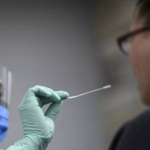  | 1. Get tested before and after you travel.One of the things you have to settle is getting tests before and after travel. This is to ensure that you don’t catch the virus or pass it on to anyone else. |
  | 2. Wear face masks wherever you go.The least you could do for the locals is to avoid endangering their health. By wearing face masks, you reduce the risk of contamination. It also prevents you from catching the virus. |
  | 3. Observe social distancing.Make sure that you keep at least 1 meter between you and anyone you come in contact with. This is to prevent catching or passing on the virus as well. |
  | 4. Wear face shields in public.Wearing face shields is another way to protect yourself and others. This prevents the transmission of any fluids from sneezing or coughing. |
  | 5. Wash your hands.Whenever there is soap and water available, wash your hands for 20 seconds. |
DON’Ts:
  | 1. Limit contact with surfaces that are prone to human touch.Avoid touching handrails, elevator buttons, and door handles. Make sure you have hand sanitizer or alcohol on hand to clean your hands. |
  | 2. Do not touch your eyes, nose, and mouth.If you can avoid it, do not touch your face nor your face mask. These areas are where the virus is most transmissible. |
  | 3. Do not cough or sneeze without covering.Consider the people around you who might get sick. Always cough or sneeze into a handkerchief or tissue. |
  | 4. Do not violate safety restrictions.Ensure that you know all the safety regulations of the area. Make sure that you strictly follow these. If you can, choose to eat indoors. |
Tips for COVID19 Pandemic Philippines Travel
  | 1. Prepare all your documents beforehand.In order to avoid conflicts and problems during your travel, have all your documents ready onhand. This would also make things easier for you in case you need any other requirements. |
   | 2. Book your hotel in advance.Booking your staying place beforehand would mean that you’d have less contact with people. This protects both you and others. It also assures a smooth experience because you’d be able to rest as soon as you get there. |
  | 3. Download mobile applications to monitor your symptoms.Many establishments and areas require a contact tracing app to ensure safety. An example of this is StaySafePH. You can also use this app to check your symptoms during your stay in the area. |
  | 4. Plan out your itinerary.To prevent unnecessary contact with other people, having an itinerary is helpful. It also helps you maximize your stay in the area. You get to know which places you can and cannot see. |
  | 5. A staycation would be safer.If you can stay inside your hotel and enjoy the views from within your car, it’s best to do this. Not only would you get rest, but you would also keep yourself and others safe. |

